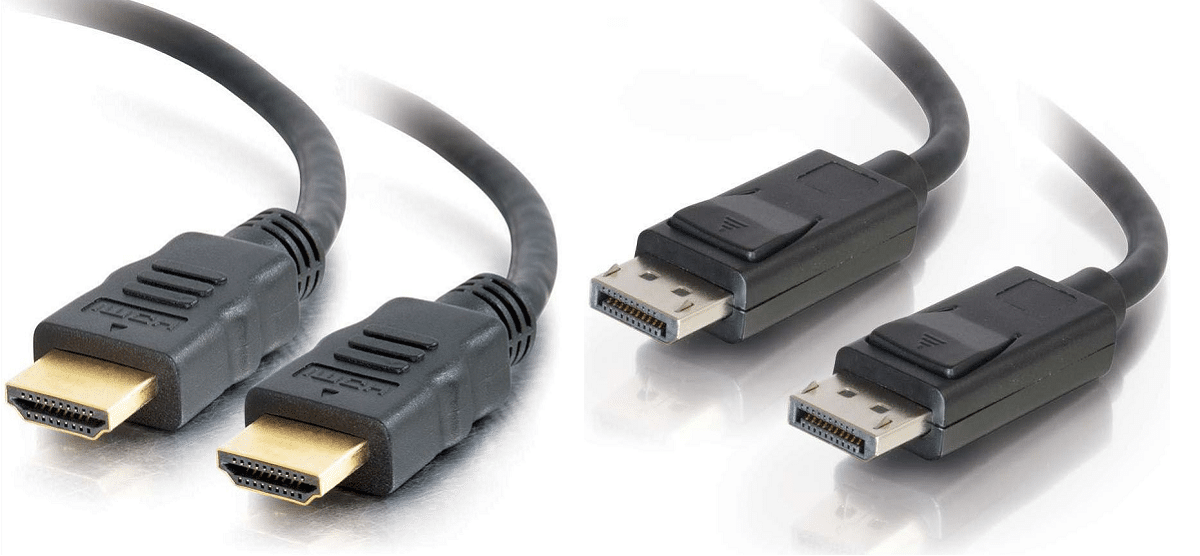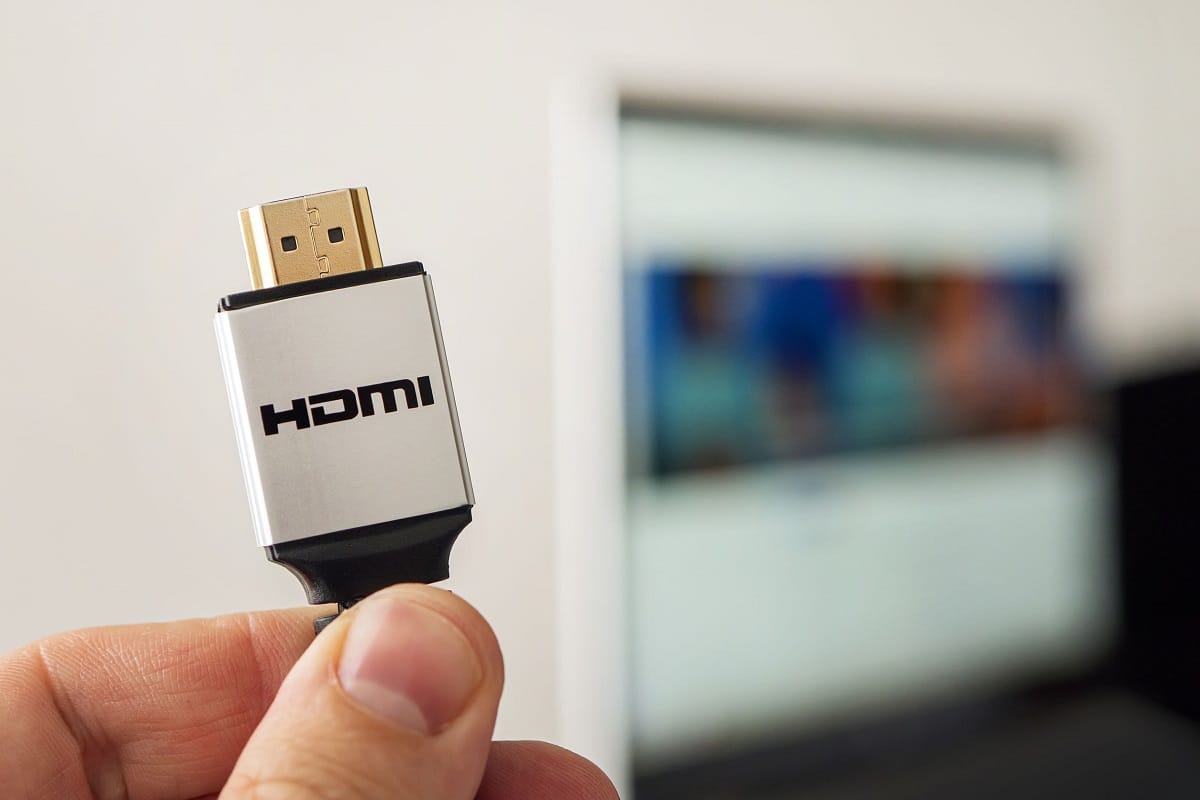
This is a question that haunts the minds of many gamers: HDMI or DisplayPort connection? Which is better? They are the two most widely used connection standards for transferring digital video and audio between devices. The former is most used for home entertainment and home theater; the second is used more in professional environments or more linked to computer technologies.
To answer the question, it is best to review in detail how each type of connection works, identifying its main advantages and weaknesses. So you can decide which one is best for you.
What is HDMI?
The standard HDMI (High Definition Multimedia Interface) was introduced in 2003 for connections to digital televisions / HDTVs and home theater components. Video, audio and limited control signals can be transmitted using HDMI cables.
The devices that can use HDMI connections are as follows:
- Digital cameras, camcorders and smartphones.
- Game consoles.
- Cable / Satellite Boxes and DVRs.
- Receivers home theater
- DVD, Blu-ray and Ultra HD players.
- TVs and video projectors.

HDMI or Displayport: advantages and disadvantages of each
HDMI cables
HDMI cables provide different capabilities depending on their signal transfer speed (or bandwidth). These are the options they offer us:
- Standard- For video transmission with resolution up to 720p and 1080i, transfer rate up to 5 Gbps. It is compatible with HDMI versions 1.0 and 1.2a.
- High speed- 1080p and 4K (30Hz) video resolutions, as well as 3D and Deep Color support. The bandwidth transfer speed is up to 10 Gbps. It is compatible with HDMI versions 1.3 and 1.4a.
- Premium high speed: improved version of the previous one. It is suitable for video transmission with 4K / Ultra HD resolution up to 4K / 60 Hz and HDR with extended color range. The transfer speed is up to 18 Gbps. It is compatible with HDMI 2.0 versions.
- Ultra high speed- Video resolution up to 8K with HDR. Transfer speed up to 48 Gbps. It also offers greater protection against electromagnetic interference caused by some wireless devices and is compatible with HDMI version 2.1.
There are also models of HDMI cables for cars, mainly used for connecting devices to video screens inside vehicles.
Connectors
An HDMI cable can also provide one or more types of end connector:
- Type A- For connections from DVD, Blu-ray, Ultra HD players, PCs, laptops, streamers, and game consoles to televisions, video projectors, home theater receivers, and other devices.
- Mini (type C): it is the one that is used mainly in DSLR cameras and large format tablets.
- Type D- We find them on smaller digital cameras, smartphones and tablets.
- Connector for automobiles (type E).
What is DisplayPort?
The connection system Display Port (DP) It is somewhat later than HDMI, as it was introduced in 2006. It was a system designed by VESA (Video Electronics Standards Association) with the aim of replacing the VGA and DVI connections, cables and connectors used mainly to connect a PC with a monitor.

HDMI or Displayport: advantages and disadvantages of each
In addition to images, DisplayPort can also carry audio signals. However, if the display device does not provide a speaker system or an output to an external audio system, the audio signal is not accessible.
The devices that can use DisplayPort connections are PC, Mac, monitors and all kinds of mobile devices. DP connectivity is also compatible with devices that have other types of connections, such as VGA, DVI and HDMI, always with the help of an adapter.
DisplayPort cables
The DisplayPort standard features five different versions of cable. Fortunately, each new version that has appeared is compatible with the previous ones. They are the following, listed according to the year of their release:
- DisplayPort 1.0 (2006): Video resolution up to 4K / 30 Hz. Transfer rate up to 8,64 Gbps HBR1 (High Bitrate Level 1).
- DisplayPort 1.1 (2007): Similar to the previous version in all its parameters, but with improvements such as HDCP (high definition copy protection).
- DisplayPort 1.2 (2009): The video resolution increases to 4K / 60 Hz. It also incorporates the option of independent multiple transmissions (Multi-Stream Transport or MST) plus a video data transfer rate of up to 17.28 Gbps, as well as other features of HBR2 (High Bitrate Level 2).
- DisplayPort 1.3 (2014): Its main contributions are compatibility with HDMI, HDCP 2.2 and transfer speed of 25.92 Gbps along with other features of HBR3 (High Bitrate Level 3).
- DisplayPort 1.4 (2016): Higher video resolution, up to 8K / 60 Hz.
DisplayPort connectors
There are only two types of DisplayPort connectors: the standard size and the mini. The first is much more widespread than the second. The connector mini DisplayPort (MiniDP or mDP) it was introduced together with version 1.2 of the DisplayPort cable in 2009. This connector is most often found on Macs and other Apple devices, although it can be used with other versions of cables through the use of adapters.
Comparison: HDMI or DisplayPort

HDMI or Displayport: advantages and disadvantages of each
Based on all the information detailed in the previous paragraphs, it is time to compare both connection standards: HDMI or DisplayPort. Which to choose? Both have great advantages and other not so positive aspects. Let's compare them to decide which one is the best for us:
Video and audio
The video transmission capacity of DisplayPort is slightly higher than that of HDMI. This is mainly because it supports fiber optic cables as an alternative to copper. In contrast, there are hardly any notable differences in the audio: both standards support up to eight channels of 24-bit 192 KHz audio.
Computer-TV connection
Not all TV brands and models offer a DisplayPort connection. Thus, to connect a DisplayPort source to a television equipped with HDMI inputs (which unlike DP, is available in all brands), you will need an adapter.
Multi-screen systems
On the other hand, in this field DisplayPort is clearly superior to HDMI thanks to its ability to output video content to multiple displays with Multi-Stream Transport (MST) technology. This port can be configured so that displays are daisy chained. This is something that HDMI does not currently offer.
Gaming
If we talk about connections to play with our PC, we are facing a technical tie. DisplayPort has been the reference for any gamer in recent years, but this changed with the arrival of HDMI 2, which has left things very even. In any case, when choosing between DisplayPort or HDMI it is essential to check the versions of each of them, since they offer different features.
As you can see, it cannot be absolutely stated that one connection standard is better than another. The choice depends on our own needs.